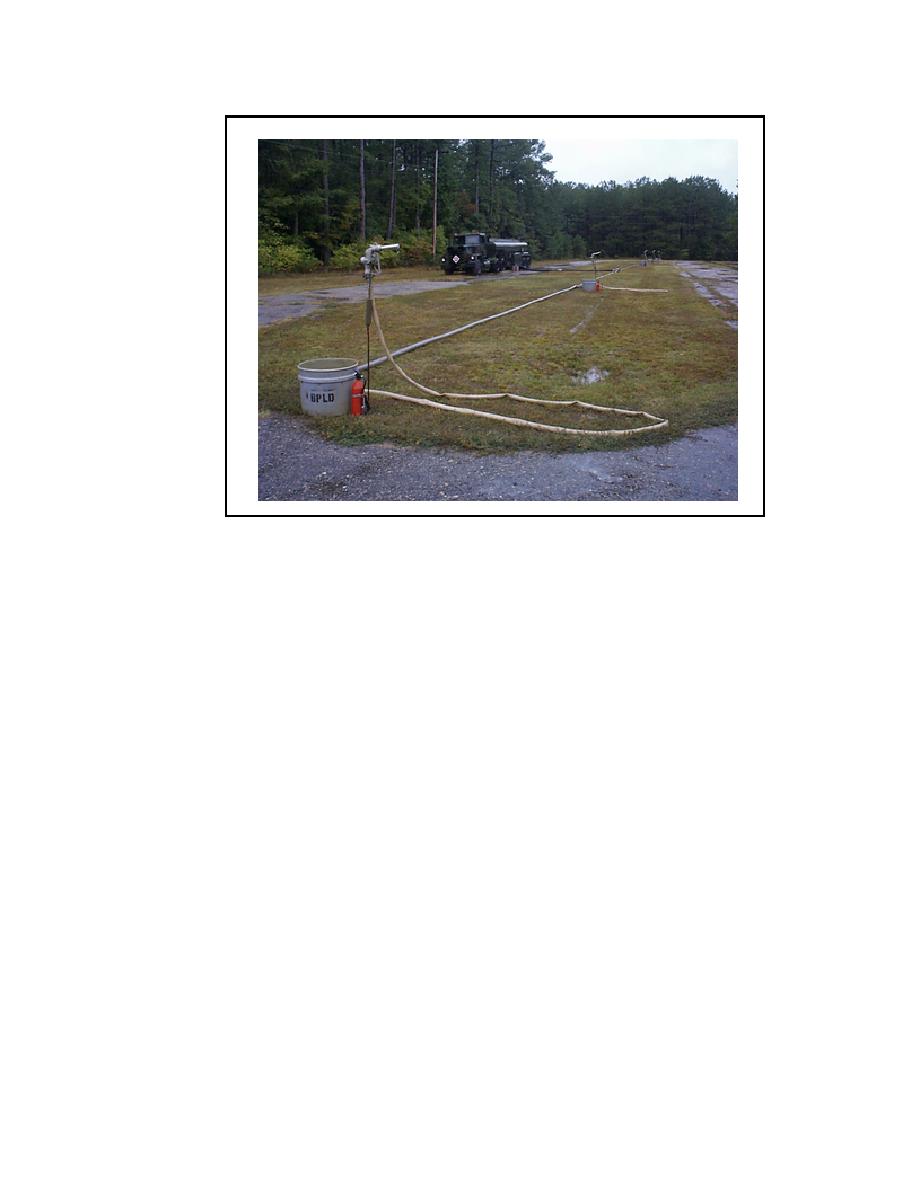
Figure 6-1. ROM assembly/disassembly.
PART C - ROM ENVIRONMENTAL AND SAFETY PROCEDURES
Enforce grounding and bonding procedures for fuel semitrailers, pumps, filter/separators and each
refueling point.
Make sure fuel handlers wear protective clothing (for example, standard combat uniforms, hearing
protection, goggles, and gloves). With the exception of the standard uniform, other items are normally
provided by the organization.
Locate fire extinguishers at each refueling point and the source of fuel.
Place fuel drip pans at each refueling point and at the fuel source. When draining drip pans, observe
fire, safety, and environmental precautions.
Ensure the fuel spill procedures and equipment, as a minimum, include: absorbents, shovels, and
containers. The Standing Operating Procedures (SOP) should detail equipment and procedures for
response in a field environment. Ensure that the SOP follows federal, state, and local requirements.
PART D - ROM EQUIPMENT CONFIGURATION
ROM is a concept that is equipment independent. As long as the concept is followed, any number of current
equipment configurations can be used to do a ROM operation. ROM operations can be employed anywhere
on the battlefield where there is a need to rapidly refuel combat vehicles.
The ROM kit consists of enough hoses, valves, and fittings to refuel up to eight combat vehicles at the
same time. The kit takes care of transporting the ROM. Any cargo vehicle with a payload capacity greater
than 1.5 tons can be used. The ROM weighs about 2,900 pounds. It cannot be loaded on the fuel-
transporting semitrailer due to the weight limit of the semitrailer. The main fuel source is the 5,000-gallon
fuel semitrailer (model 969 and M131A5C) using the onboard pump and filter/separator. The average flow
rate at each of the eight nozzles using the fuel semitrailer is 35 GPM. The area to set up and operate the
eight-point ROM kit is about 550 feet long by 150 feet wide. Multiple tankers can be connected to the ROM
kit by means of a Y- or T-fitting and valves. One tanker will be dispensing fuels through the ROM to refuel
vehicles. The remaining tanker is backup and ready to replace the issuing tanker when it is empty.
6-3
QM 5094



 Previous Page
Previous Page
